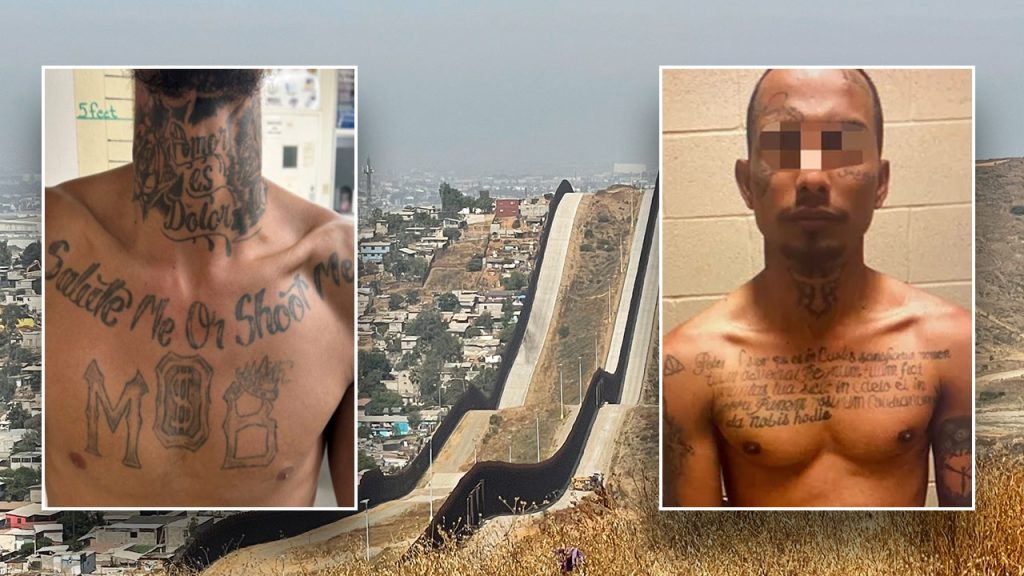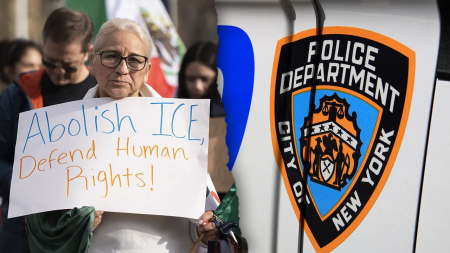The escalating presence of the Venezuelan criminal organization, Tren de Aragua (TdA), on the U.S.-Mexico border has raised significant concerns among law enforcement and government officials. The brutal murder of a Mexican immigration official, Luis Alberto Olivas, near Ciudad Juárez, has been linked to two Venezuelan migrants, with strong suspicions pointing to at least one of them being a member of TdA. This incident underscores the growing threat posed by this transnational criminal group, known for its involvement in drug and human trafficking, and raises alarms about its potential to destabilize the region and endanger both American and Mexican citizens. The identification of potential TdA members through distinctive tattoos, such as the owl symbol often associated with their human smuggling activities, provides crucial evidence for investigators and emphasizes the need for enhanced cross-border collaboration to combat this emerging threat.
The murder of Luis Alberto Olivas, pushed down a hill and stoned to death, highlights the violent nature of TdA and the risks faced by law enforcement officials working along the border. The alleged perpetrators, David J.V. and Carlos Arichuna S.M., were identified as Venezuelan migrants, with one suspected of TdA affiliation based on his tattoos. This incident underscores the potential for violence against immigration officials and the need for enhanced security measures to protect those tasked with enforcing border regulations. The brutality of the attack, involving repeated blows to the head with a large stone, emphasizes the ruthlessness of TdA and their disregard for human life. This incident serves as a grim reminder of the dangers posed by transnational criminal organizations operating in the region.
The identification of the owl tattoo as a potential marker of TdA membership provides valuable intelligence for law enforcement agencies. Mexican investigative journalist Luis Chaparro points to the owl symbol as a common identifier among TdA members, often signifying a role as a human smuggler or “guide.” This information can be used to help identify and track potential TdA members attempting to cross the border or operate within the United States. Sharing this information with U.S. authorities and cross-referencing it with existing databases will be crucial in building a more comprehensive understanding of TdA’s network and activities. This intelligence sharing and collaborative investigative work between U.S. and Mexican authorities is crucial to disrupting TdA’s operations and bringing its members to justice.
The recent apprehension of four confirmed TdA members attempting to illegally enter Texas further solidifies the group’s escalating presence and operational reach in the region. The arrest of Segundo Ocando-Mejia, Pedro Luis Salazar-Cuervo, Antonio Joe Urruttia-Rojas, and Levi Jesus Urrutia-Blanco provides tangible evidence of TdA’s efforts to infiltrate the United States. The presence of specific tattoos on Ocando-Mejia, suggestive of a leadership role within the gang, underscores the organizational structure of TdA and its potential to establish a stronger foothold within U.S. territory. These arrests highlight the importance of heightened border security measures and vigilance in detecting and interdicting TdA members attempting to cross into the country.
Texas Governor Greg Abbott’s emphasis on border security and his specific focus on the TdA threat reflects the growing concern over the group’s expanding influence. Governor Abbott’s commitment to securing the border and cracking down on TdA activities underscores the seriousness of the situation and the need for a coordinated response to address this emerging threat. His proactive approach and collaboration with law enforcement agencies are essential in protecting Texans and mitigating the potential risks posed by TdA’s presence in the region. The governor’s recognition of TdA as a specific threat, as opposed to just general criminal activity, highlights the severity of the situation and the need for targeted strategies to combat this organization.
The increasing presence of TdA on the U.S.-Mexico border poses a significant challenge to both national security and regional stability. The group’s involvement in drug and human trafficking, coupled with its demonstrated capacity for violence, necessitates a comprehensive and collaborative approach involving both U.S. and Mexican authorities. Sharing intelligence, coordinating law enforcement efforts, and enhancing border security measures will be crucial in combating this growing threat. Furthermore, understanding the symbolism and markings associated with TdA, such as the owl tattoo, provides valuable insights into the group’s structure and operations, aiding in the identification and apprehension of its members. The continued vigilance and collaborative efforts of law enforcement and government officials will be essential in disrupting TdA’s criminal activities and protecting the safety and security of communities on both sides of the border.










